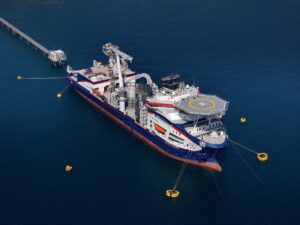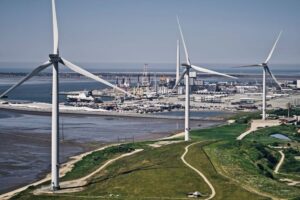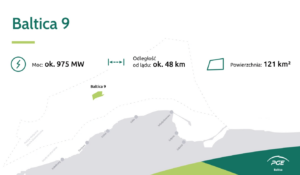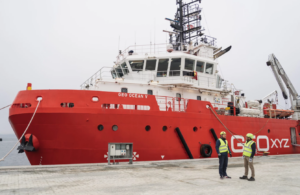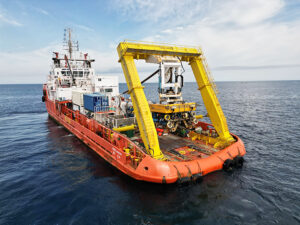Offshore wind energy may soon find its way to the Upper Peninsula (USA)
The Great Lakes Wind Council was appointed by Gov. Jennifer Granholm in 2009 in an effort to evaluate the most and least favorable areas for offshore wind farms.
The council consists of a 29-member board and follows a list of specific criteria on which to base evaluations. After an area is evaluated, the council places it under one of the following definitions: categorical exclusion, conditional or most-favorable.
Once the council designates a favorable area, public opinion is gathered to gauge the feasibility of the offshore farms. The recent meeting outlined the possibility of farms located as close as the Garden Peninsula.
Following the Escanaba meeting, Dan Foster, CEO of Solar Now LLC, based in Midland, expressed his optimism regarding the exploration of the lake-based wind farms.
“The Great Lakes Wind Council is a great boost in the local economy, a tremendous and clean impact on the environment and health of the the entire U.P.,” said Foster. “The wildernesses and beautiful landscapes in the U.P. are critical to protect and save for all future generations.”
Foster, who commended the council on its unique approach to acquiring public opinion, was excited about the possibility of a greener way to harness energy.
“I am for anything that phases out coal or oil – these farms would mean a tremendous boom for Michigan,” he said. “The GLOW council spent two years researching this and has done a fantastic job presenting their findings to the public.”
Despite the possible benefits of offshore wind power, there are some residents who feel that certain negative outcomes could potentially outweigh the good.
According to Joe Kaplan, a biologist, the local areas deemed “favorable” by GLOW council also double as potentially hazardous for birds, bats and even butterflies.
“The governor’s Michigan Great Lakes Wind Council has identified the five ‘most favorable’ areas for offshore wind development using a list of 22 criteria,” said Kaplan. “Unfortunately, these areas overlap with some of Michigan’s best-known migratory bird concentration areas.”
According to Kaplan, the migratory patterns of these birds could be severely disrupted by any offshore wind farms in the suggested locations. He also noted that the wind turbines could cause the death of some important and beneficial species.
“There’s concern relating to comments from the Council’s chair that wind power is ‘environmentally benign’ and ‘trade-offs’ may be necessary when factoring the pros and cons of such an undertaking,” explained Kaplan. “Most should find that answer problematic as we’re talking about potentially huge unknown risks to some of our most important biotic assets – animals that spend their lives eating forest pests and pollinating our crops.”
Currently, the council follows a number of organizations with the same goals – such as the Michigan Alternative and Renewable Energy Center (MAREC) at Grand Valley State University.
A Request for Proposals (RFP) was recently released by MAREC, looking for parties interested in the installation and operation of a meteorological tower and research platform in Lake Michigan, as well as the capture and documentation of offshore wind and related research data.
MAREC currently has $3.1 million in grants to move ahead with their project.
According to Margaret R. Gale, dean of the School of Forest Resources & Environmental Science at Michigan Technological University and member of the GLOW council, there is much work to be done before an offshore wind farm in the U.P. becomes a reality.
“As far as the possibility of offshore wind energy in the U.P., who knows,” she said. “The decision of whether to place a wind farm in a certain area is dependent on many factors from social to ecological/environmental to economic…just to name a few.”
[mappress]
Source: dailypress, May 08, 2010;


